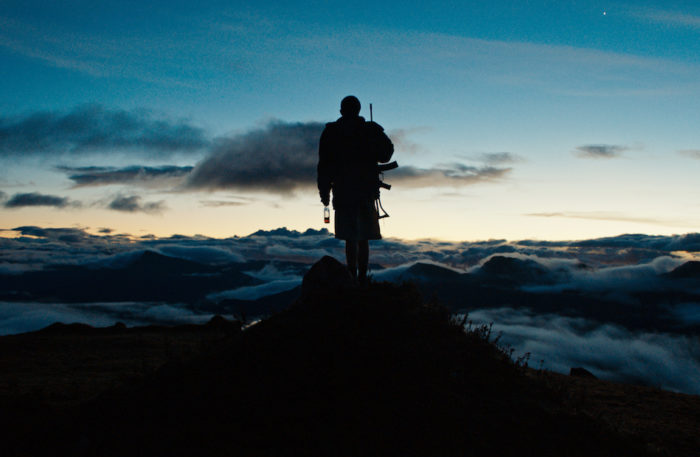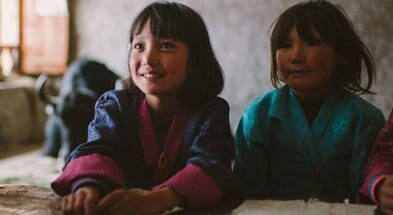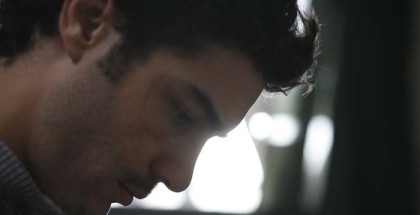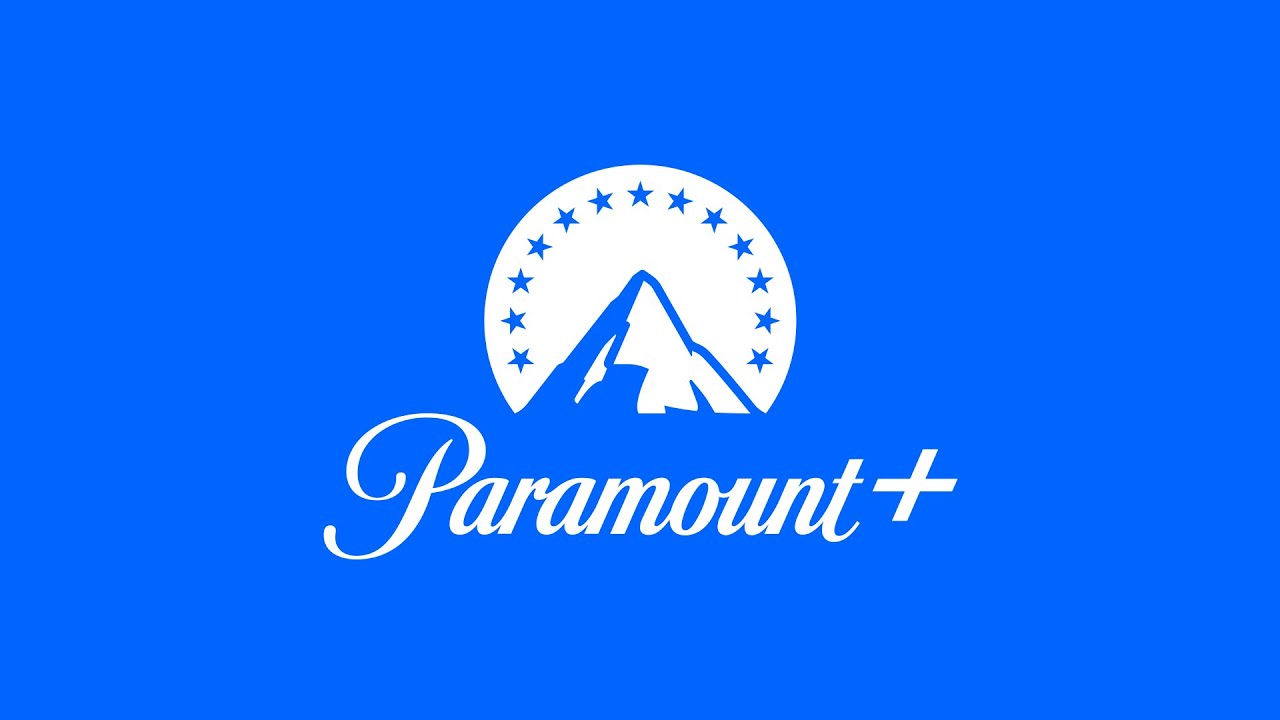VOD film review: Monos (2019)
Review Overview
Hallucinatory imagery
9Bunkered-in performances
9Mica Levi's minimalist score
9Anton Bitel | On 17, Feb 2020
Director: Alejandro Landes
Cast: Julianne Nicholson, Moisés Arias, Sofia Buenaventura, Julian Giraldo, Karen Quintero, Laura Castrillón
Certificate: 15
The first word uttered in Monos is the name “Rambo”. Yet while the film is set in a milieu of guerrilla warfare where former Green Beret John Rambo (of the First Blood franchise) would be right at home, his namesake (Sofia Buenaventura) is a quiet child (who turns 15 during the film), playing a game of football with other children who are all wearing blindfolds. And unlike Sylvester Stallone’s macho, musclebound he-man, this Rambo – referred to once as ‘like a brother’ but played by a woman – is of undefined gender, much as long-haired fellow soldier Dog (Paul Cubides) likes to cross-dress. Whether Rambo’s gender ambiguity comes down to the indeterminacy of emergent adolescence, or just to non-binary status, it would have no place in any of the American Rambo films. Monos marks itself by difference and otherness.
Indeed, in Colombian-Ecuadorian director Alejandro Landes’ film, which he co-wrote with Alexis Dos Santos, it is not just gender identity that is fluid. Playing out their part in an adult world through blinkered, brutalising games of cooperation and dominance, this squad of eight teen soldiers (played by non-professional actors) is named ‘Monos’, the Spanish word for ‘monkeys’ – and as these children, at the film’s halfway point, head from their mountain base deep into the jungle and gradually break apart from the ‘Organisation’ that commands them, their descent into savagery will make them less like humans and more like animals. Conversely, their American hostage ‘the Doctora’ (Julianne Nicholson) is at first allowed relative freedom within the unit, but in the jungle will come to be chained up by her neck and treated like a dog, leading to ferocious behaviour.
Meanwhile the sinewy ‘Messenger’ (ex-FARC soldier Wilson Salazar) – the children’s main link to the Organisation, the adult world and any kind of external authority – is played by a little person, so that in the scenes where he is shown giving orders to the ranked soldiers, his relative size makes him look more like a child than they do. Once the Messenger has seen the collapse of discipline in their camp, he will ask: “Are you soldiers or bandits?” Determining which they are, and where exactly the boundary between these two states lies, is one crux of this film, alongside others – children or adults? male or female? human or animal? – which are similarly raised never to be fully resolved.
Monos, too, remains elusive, and hard to pin down. While it falls into the small tradition of films like Jean-Stéphane Sauvaire’s Johnny Mad Dog (2008), Kim Bguyen’s War Witch (2012) and Cary Joji Fukunaga’s Beasts of No Nation (2015), which deal with the moral and psychological conflicts of child soldiers, its shift from wide shots in the opening to reeling handheld close-ups towards its end (and Mica Levi’s droning score) bring a hallucinatory, oneiric quality to everything, even as the film drifts from war into the territories of Lord of the Flies. And while scenes of an armed cadre filling their endless waiting time with exercises and games recall Takeshi Kitano’s Sonatine (1993), Claire Denis’ Beau Travail (1999) and Sam Mendes’ Jarhead (2005), the games in those other films are not actual child’s play.
Even the film’s setting is vague. There are hills, jungle, a river and a city, but really this could be anywhere – which is to say, almost everywhere – Spanish-speaking in Central or South America. That said, Monos was certainly shot in Colombia, and in its coming-of-age themes, one might discern an allegory of a nation still emerging from, and bearing the scars of, recent civil war. When the Doctora briefly escapes her captors and flees into the jungle, she resorts to placing a plastic bag over her head to keep a mosquito swarm at bay – but then of course she cannot breathe. This too is a metaphor for the suffocation of both an individual and a riven country, in a film where drowning is a motif, and where others, like Rambo, struggle to keep their head above water.
Monos ends, as it begins, with Rambo, and with a question: “What should we do with the unidentified person?” By this point, having seen the petty power grabs all around, the vicious suppression of human empathy, the pillaging and murder of anything good, the bestialisation of humanity, and the hopelessness (and terrible consequences) of any attempt to get away, we are left wondering the same thing about Rambo, whose identity and fate seem always to be in the balance. The question may still be echoing in your head days later.



















